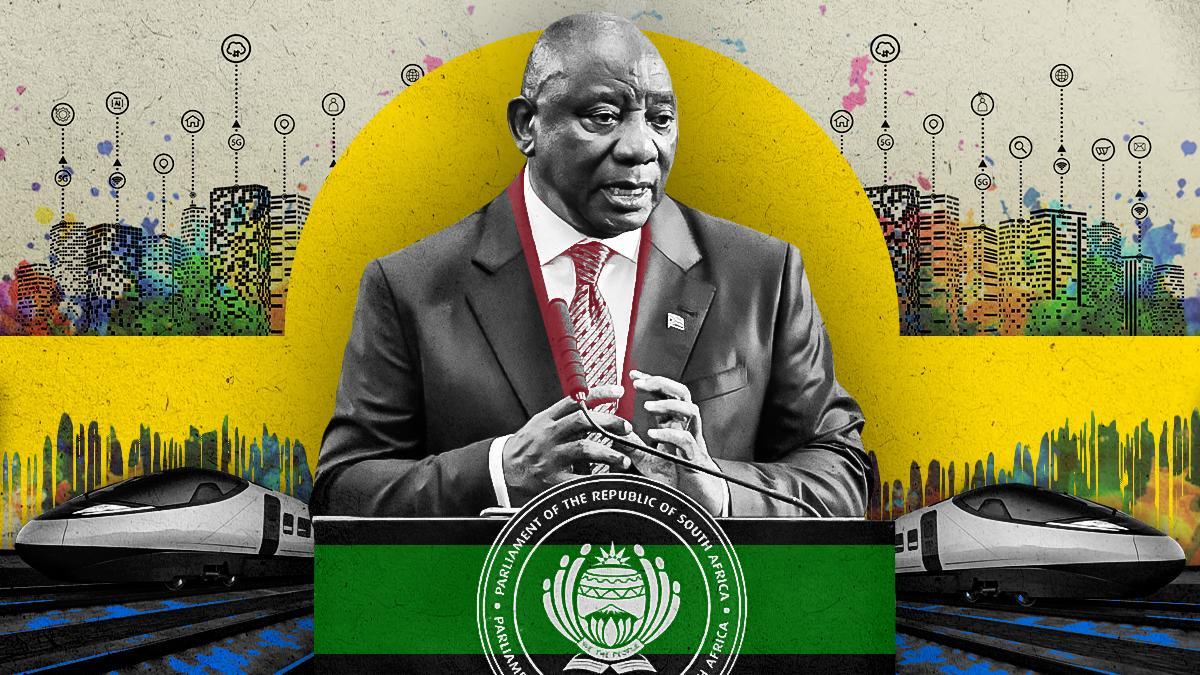Africa-Press – South-Africa. South Africa’s era of stagnant economic growth below 1% appears to be coming to an end, with the country’s slow reform process beginning to bear fruit.
This does not mean the country’s economy is going to grow rapidly and achieve the 5% economic growth needed to make a meaningful impact on its unemployment rate.
However, it signals the end of an era of stagnation, which should bring its own benefits in the form of improved sentiment, investor confidence, and less financial pressure on the state.
South Africa’s stock market is currently enjoying its best year of the past three decades, with the MSCI index returning over 60% year-to-date.
While the performance of the stock market is largely removed from the country’s economic fundamentals, this is not to say South Africa is not making strides in the right direction, Melville Douglas chief investment officer Bernard Drotschie said.
In a recent research note, Drotschie said multiple indicators show that South Africa is moving in the right direction, with the slow reform progress finally beginning to bear fruit.
“We can see this in well-regarded measures of confidence. Business, civil, and consumer confidence are moving in the right direction,” Drotschie said.
This is among the few times in recent history that all three indicators have moved in the right direction and are almost all in positive territory.
The increased confidence is a result of the reforms taking place in key network industries, particularly electricity and logistics, to enable greater private sector participation.
This is resulting in increased investment in these sectors, with the immense investment from the private sector in renewable generation helping to bring load-shedding to an effective end.
Substantial progress is also being made in increasing the private sector’s participation in logistics, with Transnet beginning to concession some of its key rail corridors and a private operator set to manage Durban’s container terminal.
There is still significant work to be done, as the country continues to face headwinds from deteriorating global trade conditions to an ongoing water crisis.
“Here, it is important to note the base effect. It is no secret that South Africa’s economy is coming off a low base,” Drotschie said.
“GDP growth, capital investment, and infrastructure have been muted and, at times, in decline. This is harmful to prosperity.”
“However, it also creates prospects for outsized benefits from relatively small improvements – chiefly for those who stay the course.”
The graph below, courtesy of Drotschie and Meilville Douglas, shows the improvement across the three confidence readings over the past four quarters.
Economic growth can triple
Key to the continued success is the Government of National Unity (GNU), which provides the political shield for the reforms to continue.
Some of these reforms are irreversible, but others may yet be undone by a different administration, which may view increased private sector participation negatively.
Drotschie said it is important for investors and South Africans to point to other performance keystones and real-world examples of the reform agenda having its desired effect.
This begins to gradually shift the sentiment towards South Africa and alters the perception of private sector participation in key industries.
The main keystone is electricity supply, which provides the best example of how private sector investment can couple with good governance in driving better outcomes.
Private companies have pumped billions into alternative sources of energy generation, relieving pressure on Eskom and enabling the utility to engage in extensive maintenance.
This has resulted in load-shedding largely becoming something of the past and is likely to ensure that increases in electricity prices are less severe in future.
South Africa’s ports and railways reflect a similar dynamic, albeit far slower and less progress being made. The country’s major ports are among the worst in the world, yet two are among the top four most-improved year-on-year.
Drotschie said these are small steps, but matter immensely in the long run and, considering South Africa’s low base, can have an outsized impact.
The next keystone is the country’s pending removal from the Financial Action Task Force’s grey list, with South Africa having completed its action plan.
South Africa is set to be removed from the list in the last quarter of 2025, which should provide a meaningful boost to sentiment off a low base.
Drotschie previously said South Africa can triple its economic growth in the coming years as private companies invest heavily in infrastructure.
“South Africa’s growth will be primarily driven by infrastructure investment, which includes water, roads, electricity, railways, and ports,” Drotschie said.
“This is effectively the base of the economy, and we need to get it to work to drive better outcomes. We need basic infrastructure to function before anything else.”
Drotschie explained that the amount of money to be spent in this area will be significant, boosting the local economy and hopefully getting some private capital off the sidelines.
If the government’s infrastructure plans come to fruition and private sector participation is increased and encouraged, Drotschie expects to see a pick-up in business confidence.
This should create a virtuous cycle, in which private companies will then take some of their cash off the sidelines and invest it in fixed assets and growth.
Source: dailyinvestor
For More News And Analysis About South-Africa Follow Africa-Press






